Abstract
The authors report on a study carried out to determine the experimental plague-vector efficiency of X. v. hawaiiensis compared with X. cheopis after both species had been infected with a virulent Hawaiian plague strain (S113). In deriving the numerical values for vector efficiency the concepts of Wheeler and Douglas were followed with some modifications. An additional component, the blocking-survival potential, was used to obtain a vector index.
The experiments showed that the mean extrinsic incubation period was shorter in X. v. hawaiiensis than in X. cheopis but that the latter species produced more blocked fleas. The observed values for vector efficiency indicate that X. cheopis was about twice as efficient in plague transmission as the Hawaiian flea. The time and percentage mortality curves of mice dying of plague after blocked fleas had fed upon them were observed to be similar to the curves of mice succumbing to the intracutaneous inoculation of known dosages of P. pestis.
In general, it was found that bacteriological culture of the faecal droppings of fleas was unreliable as a check on plague infection in fleas.
Full text
PDF
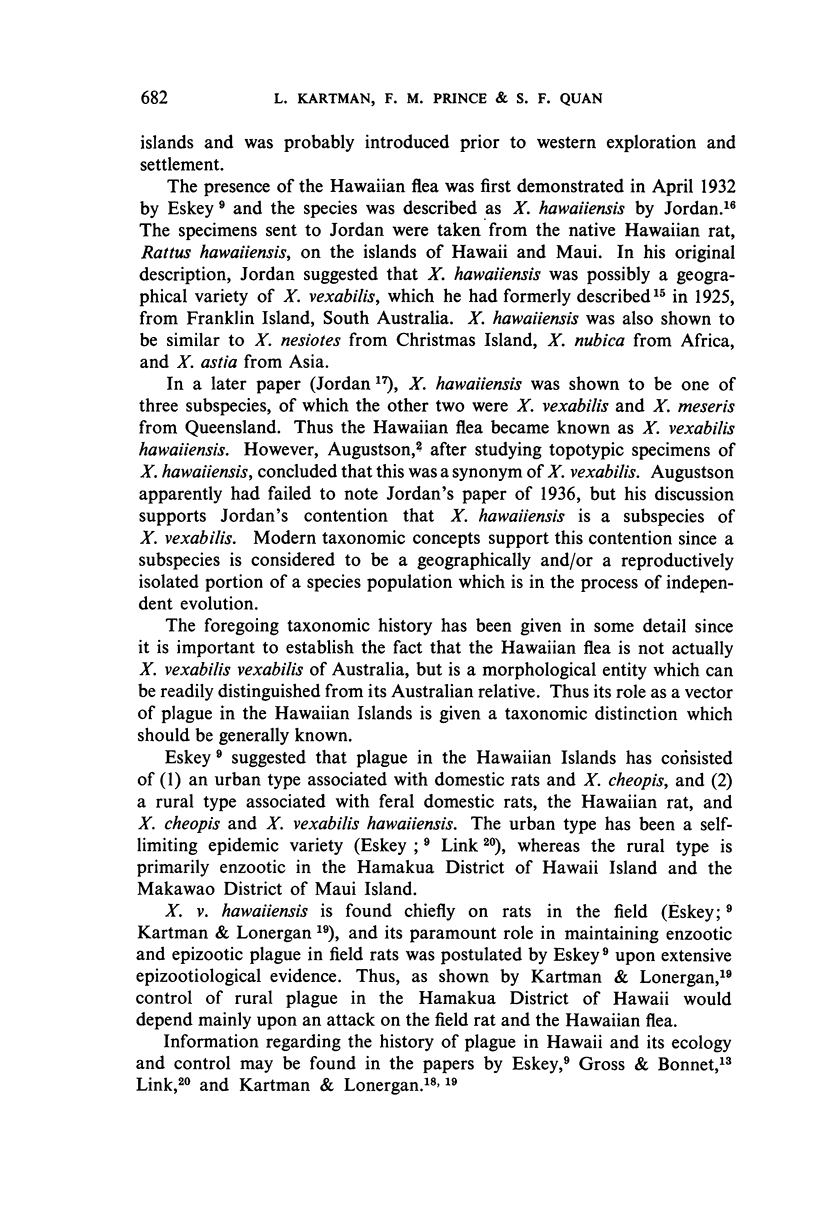
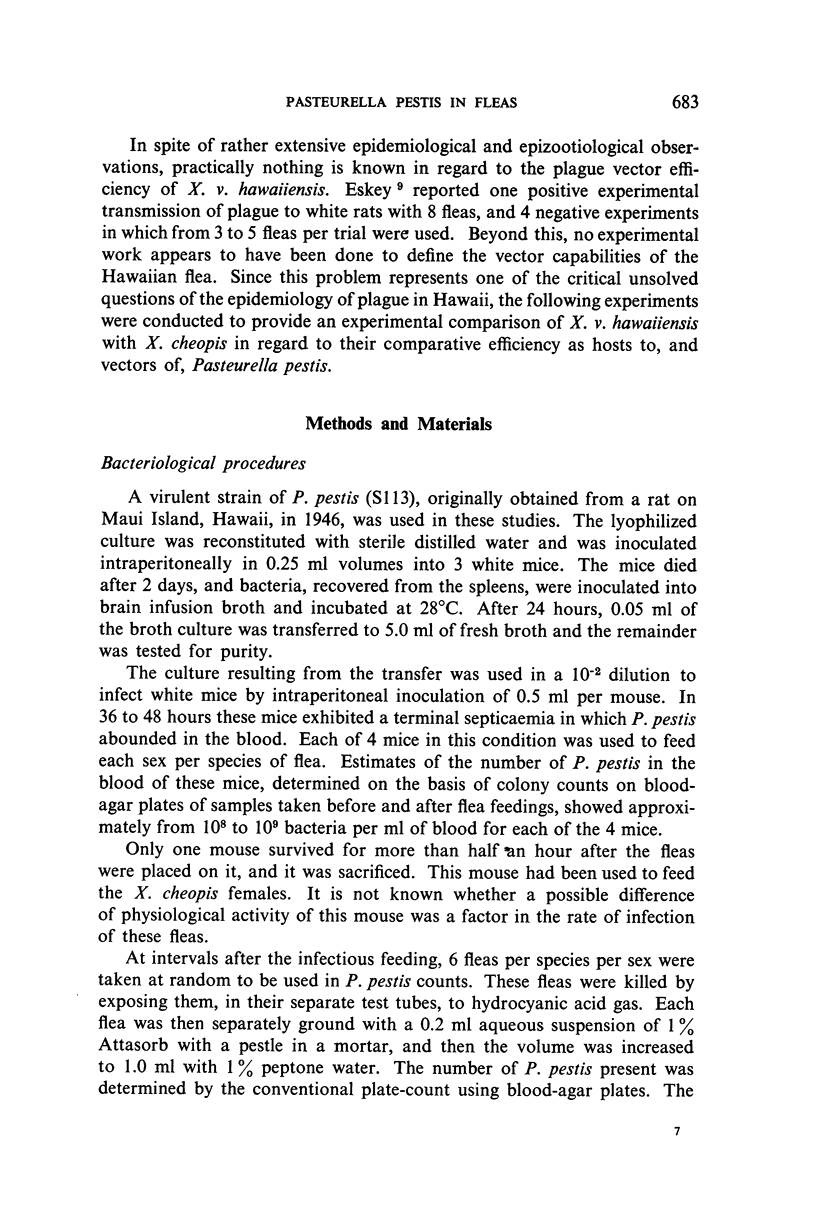
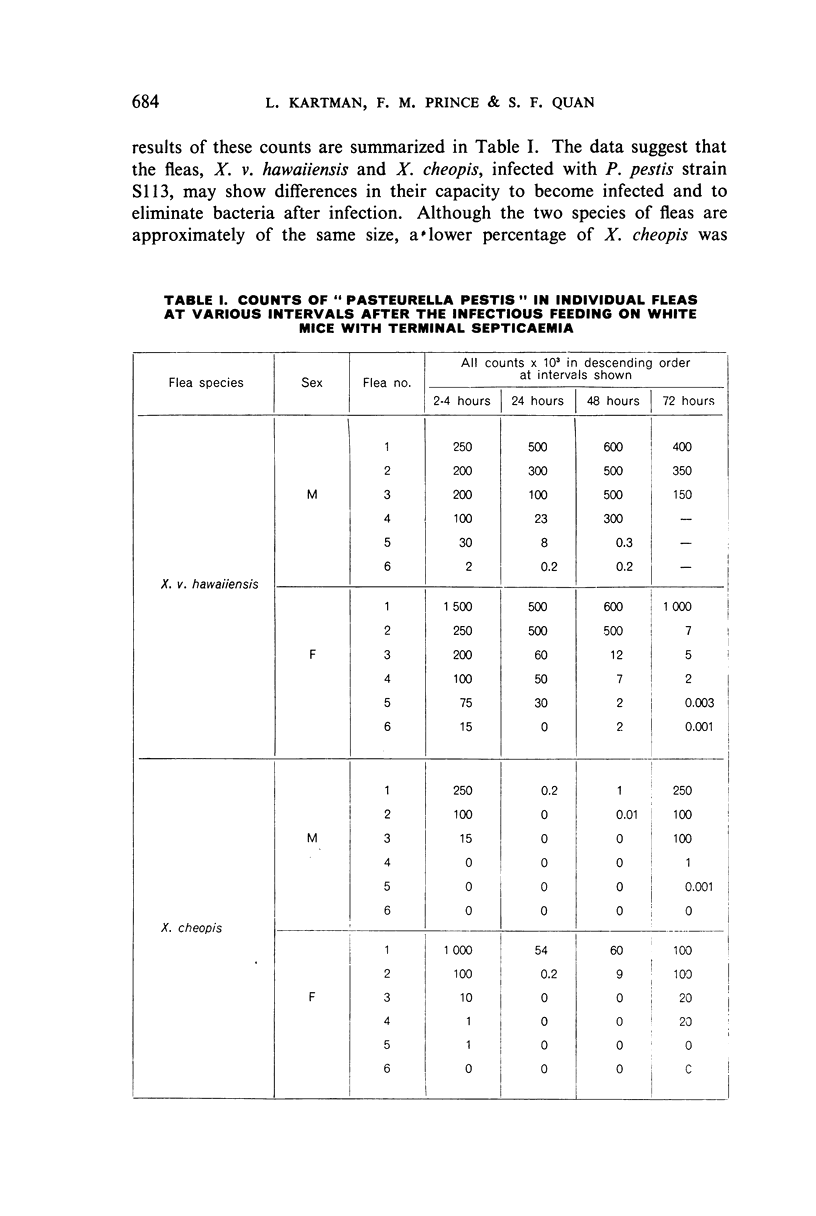

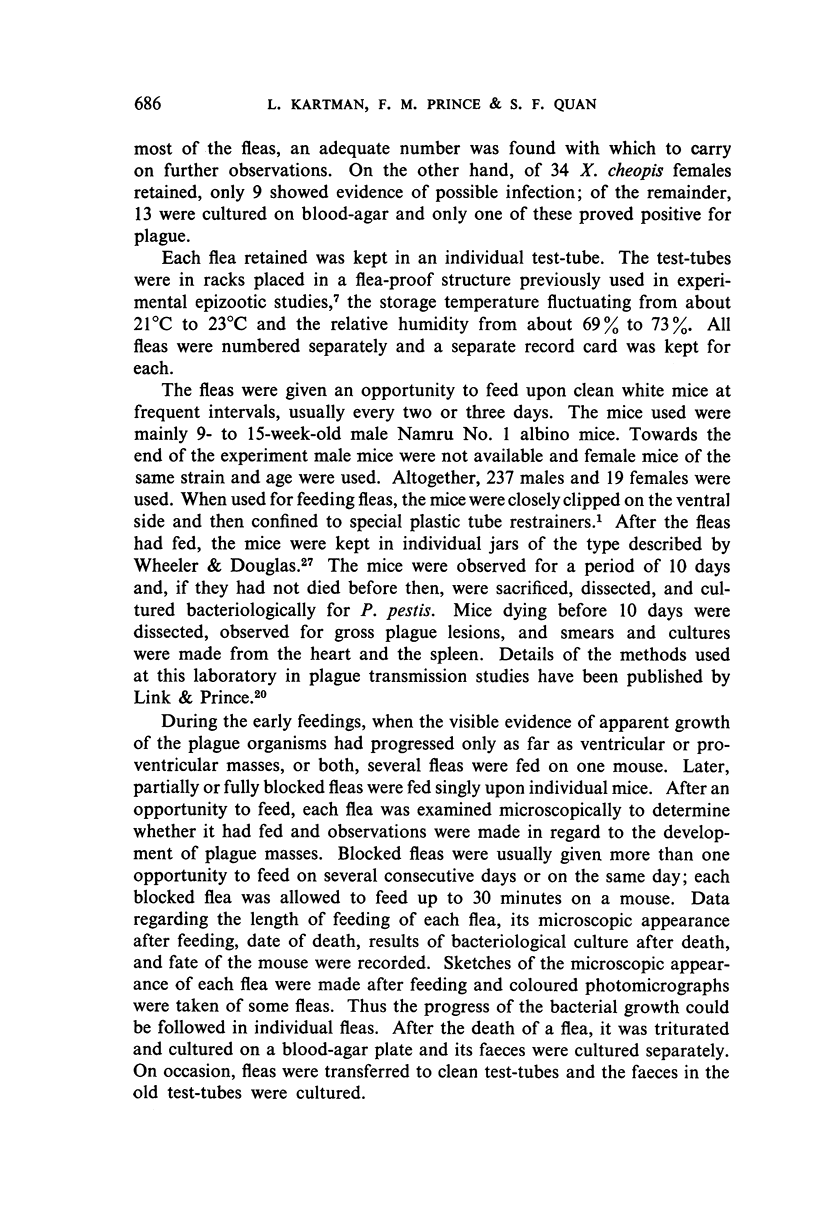
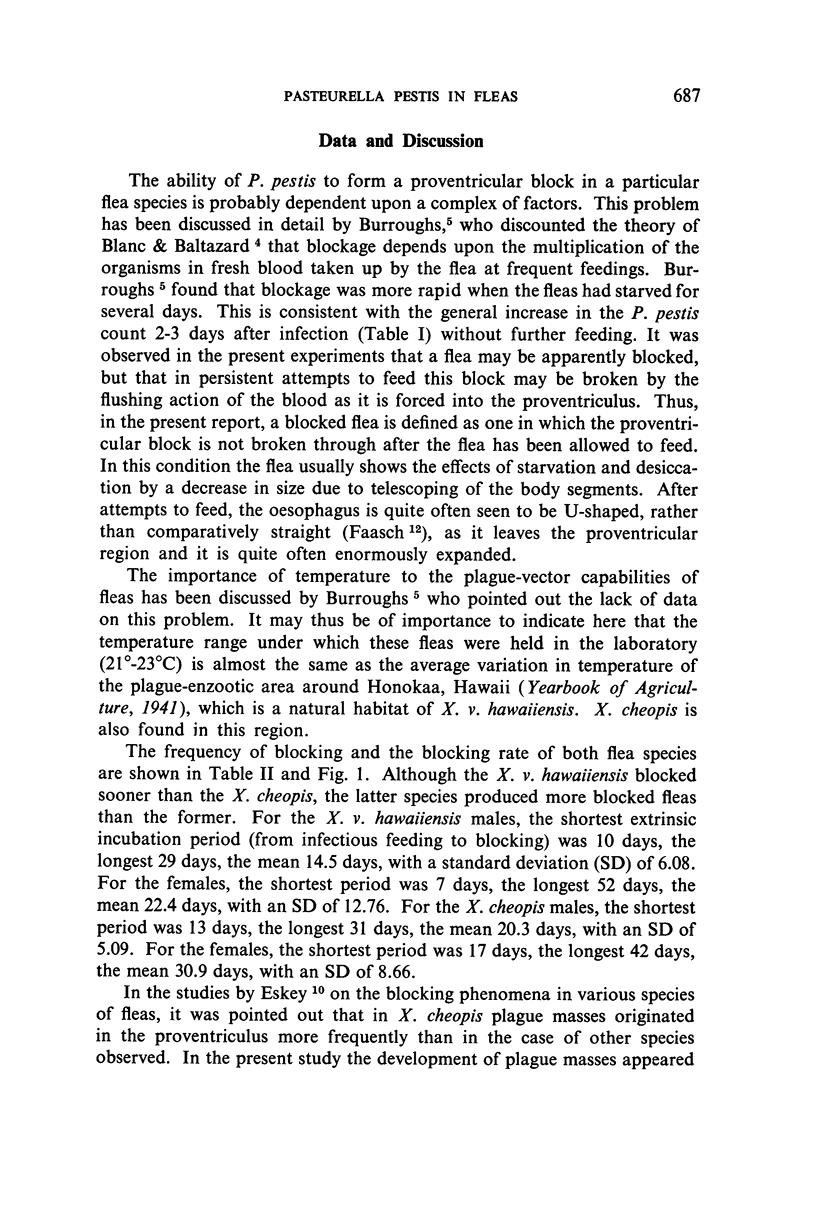


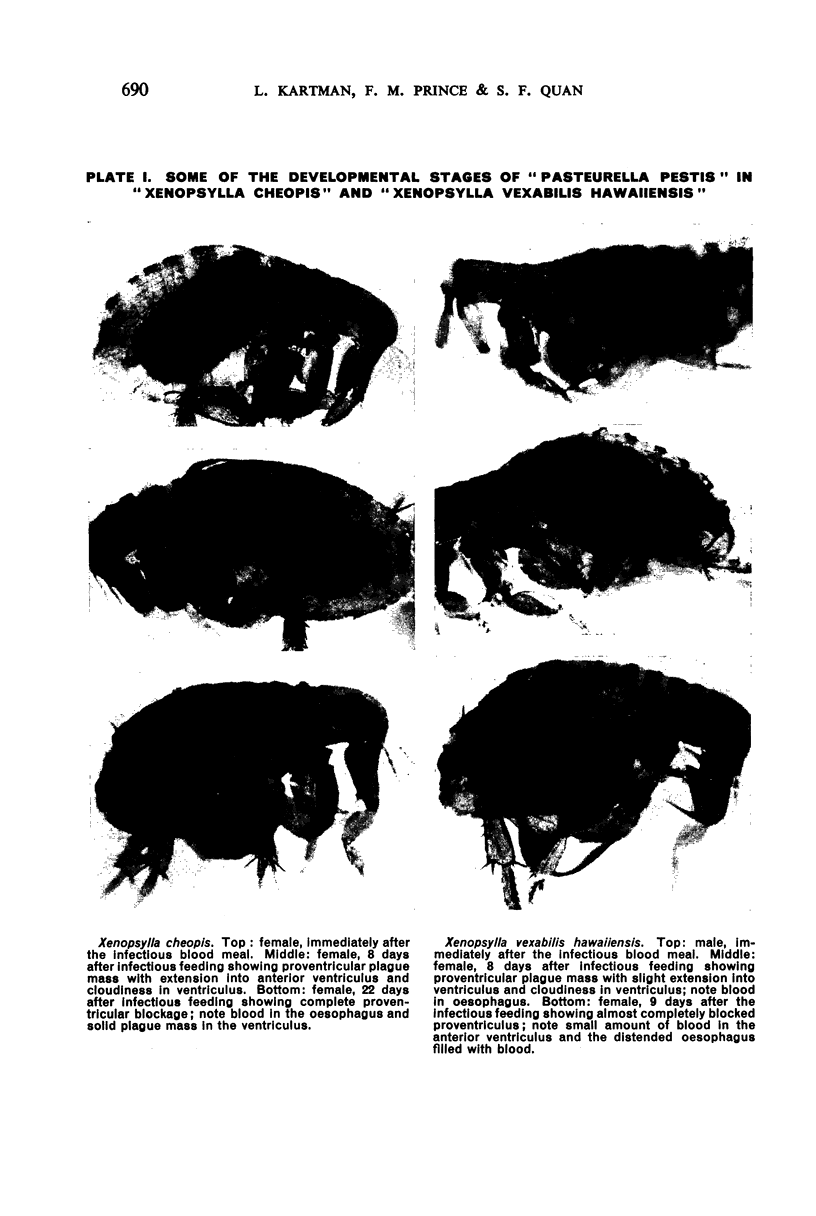

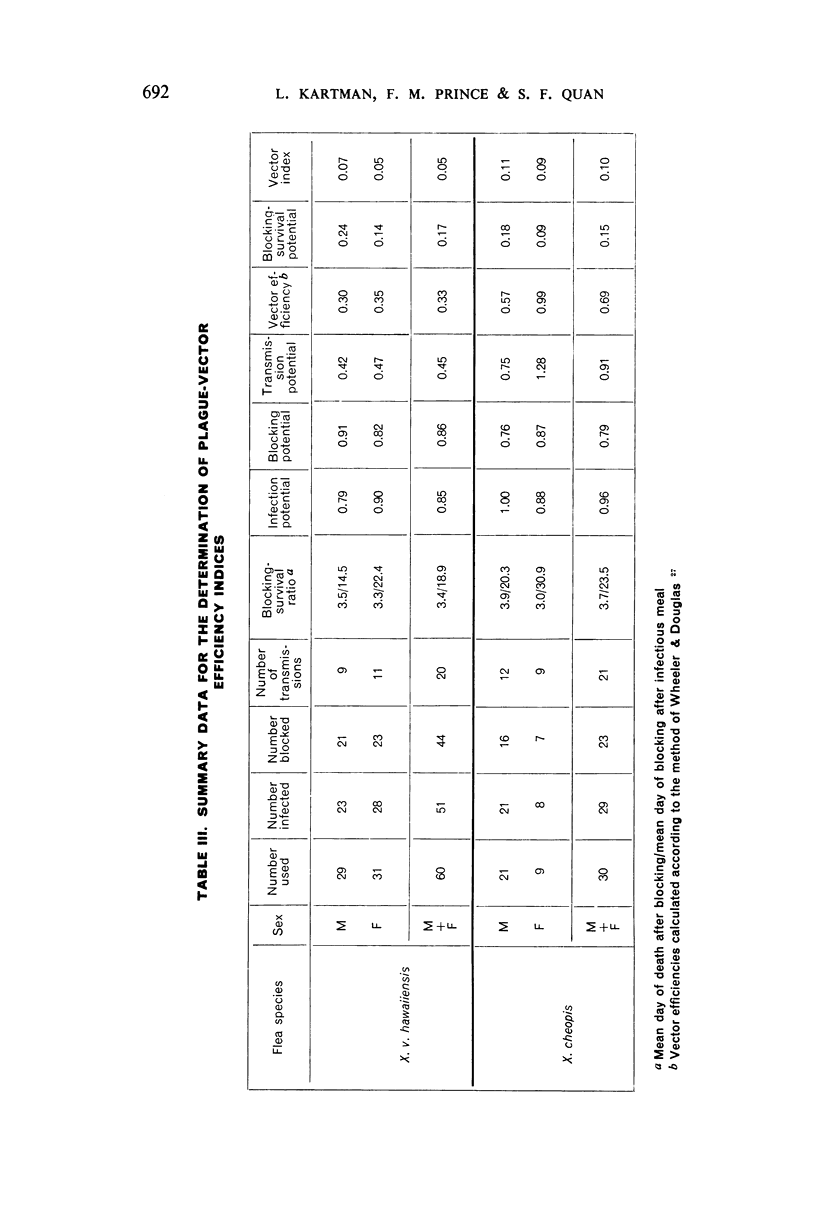
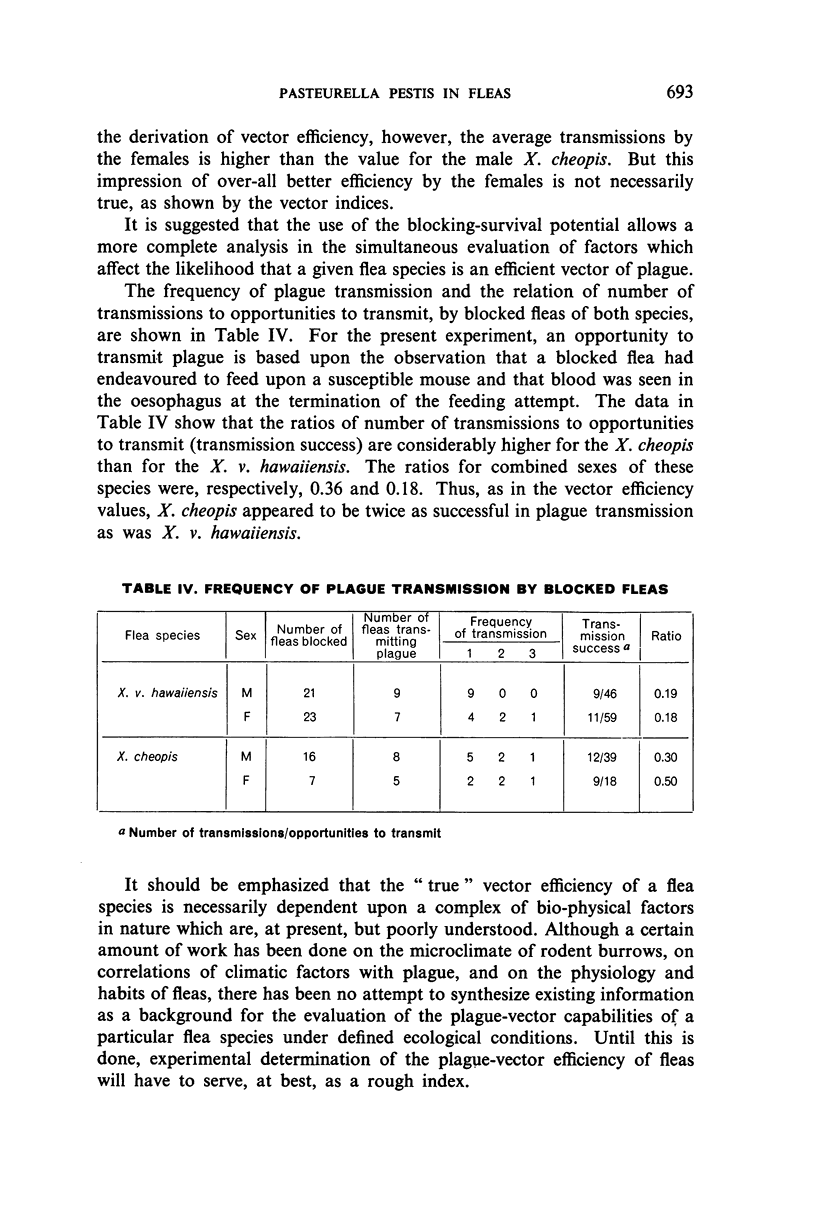

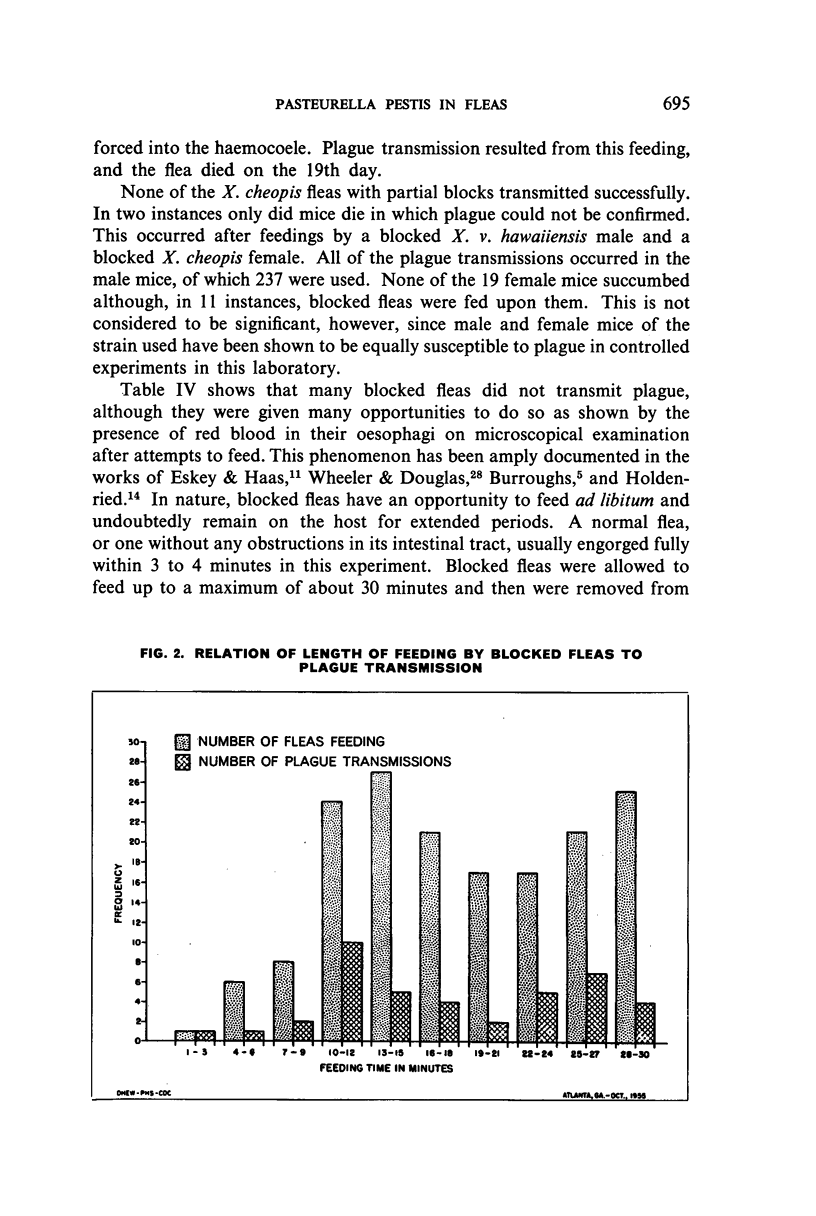
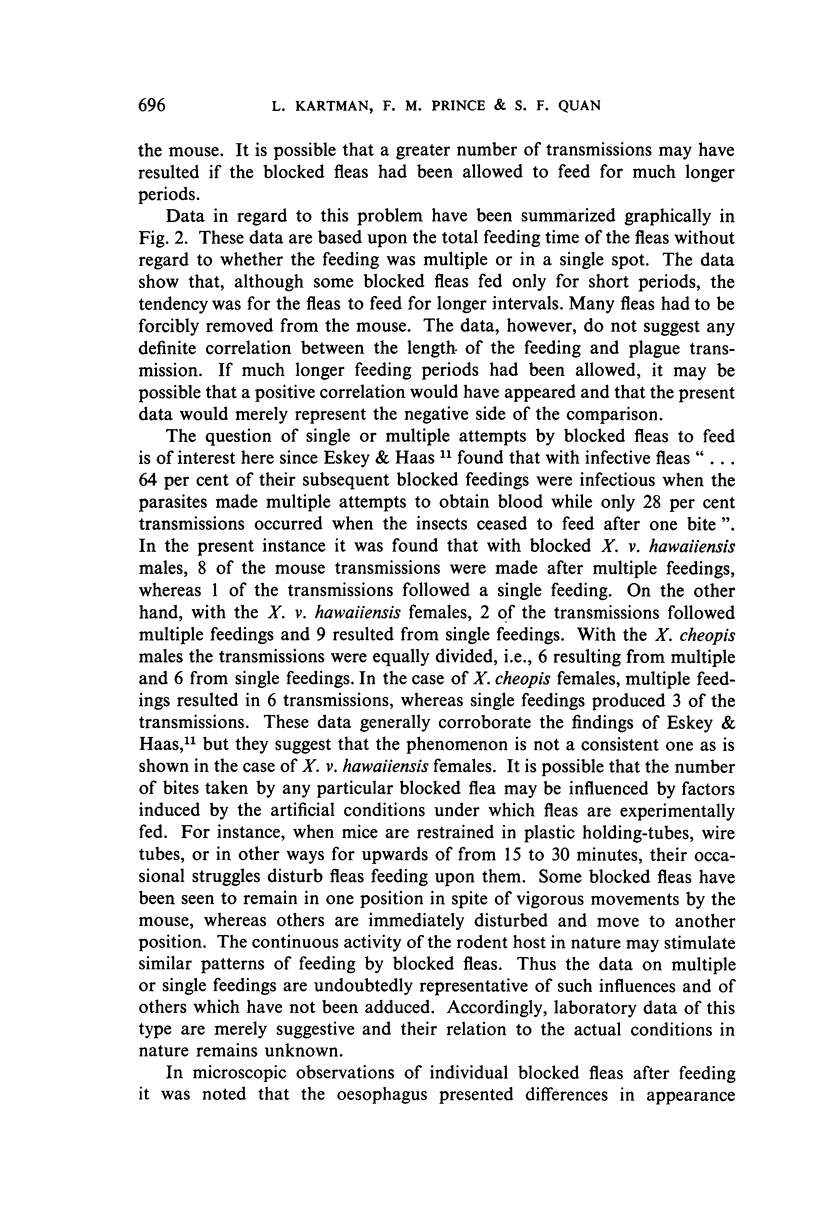

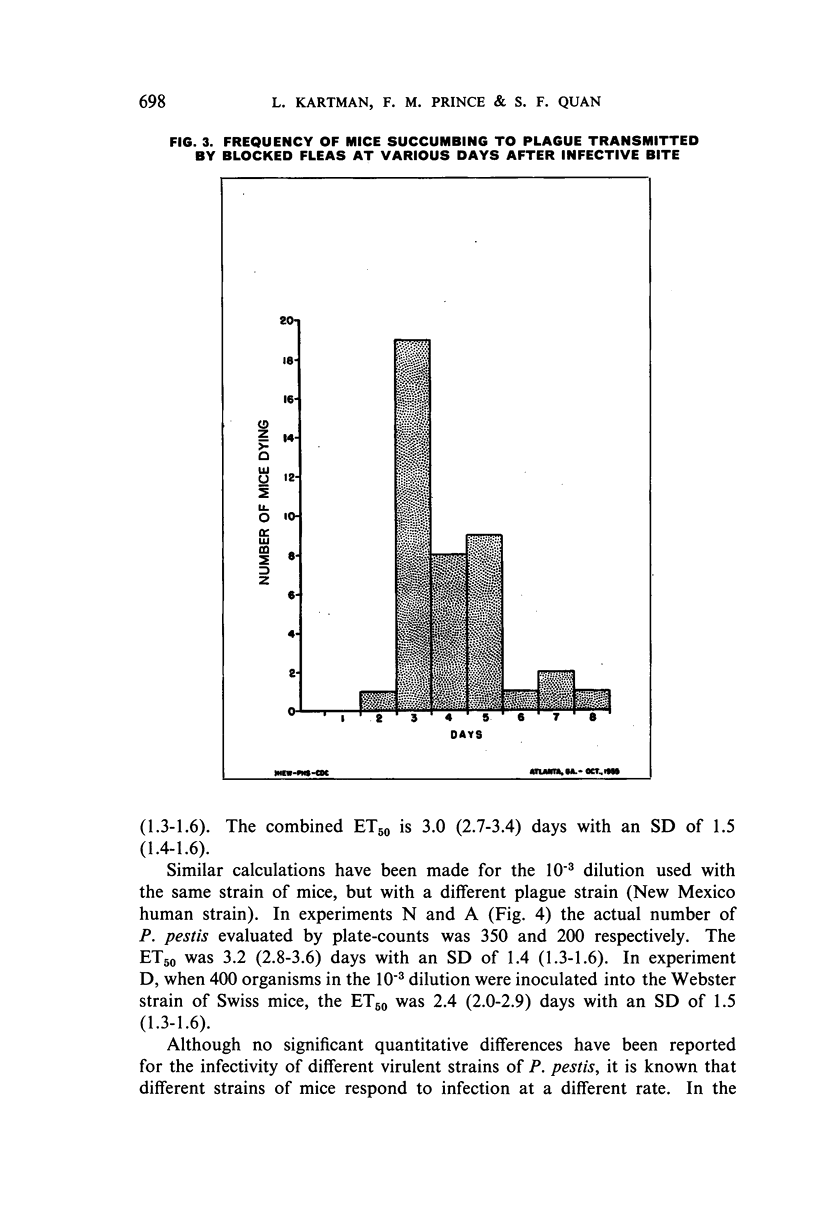
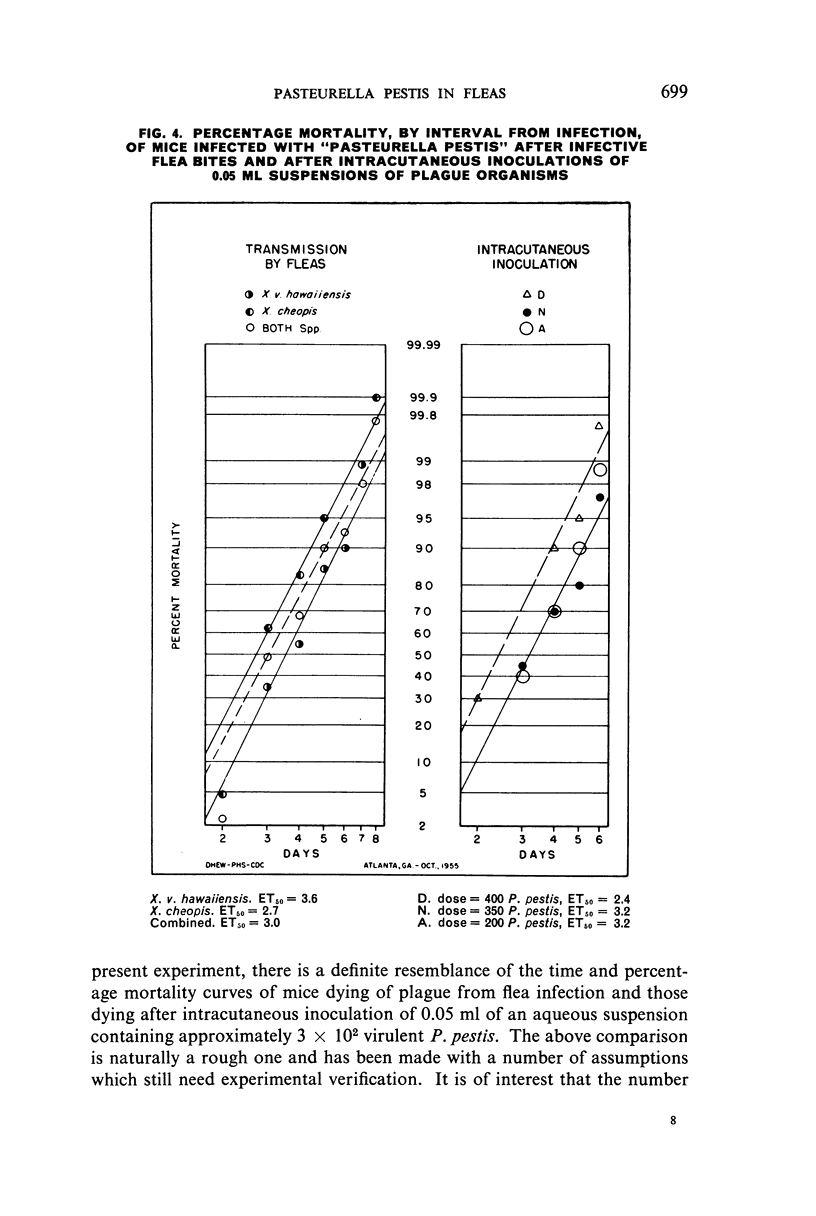
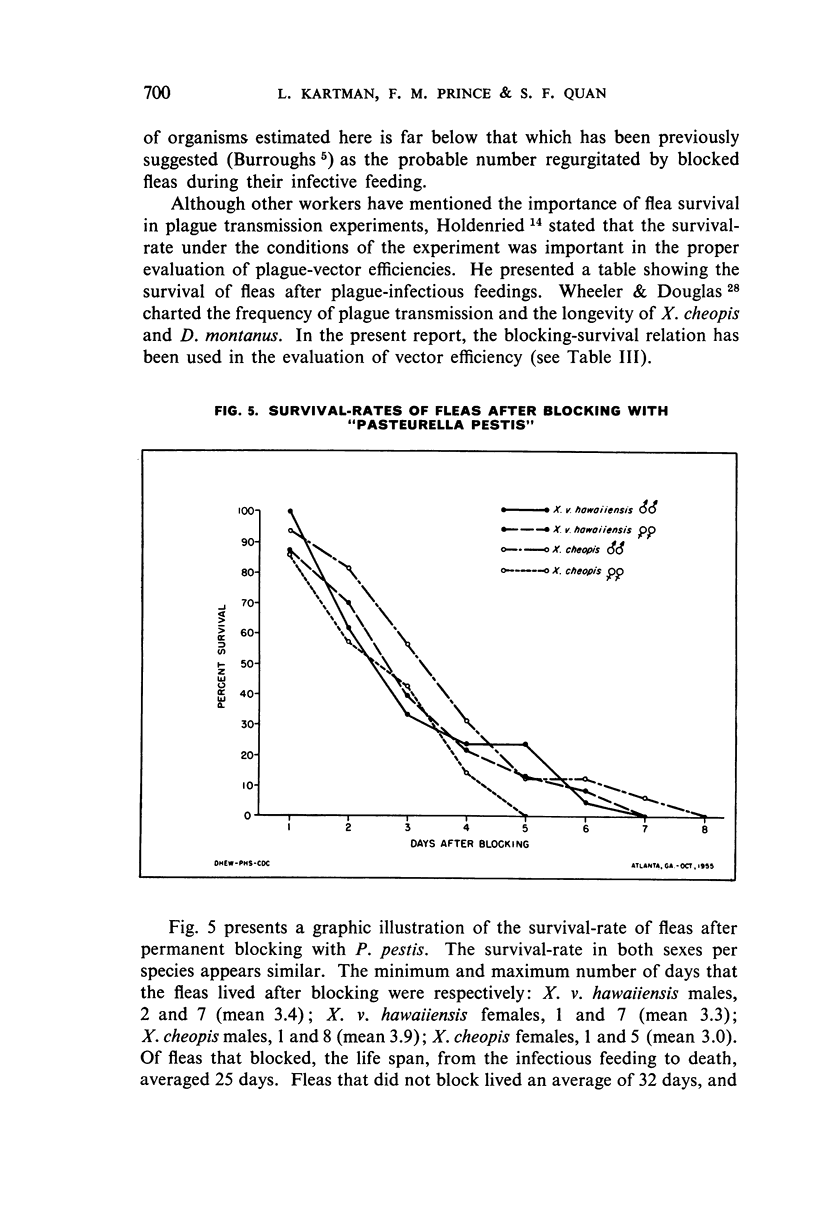

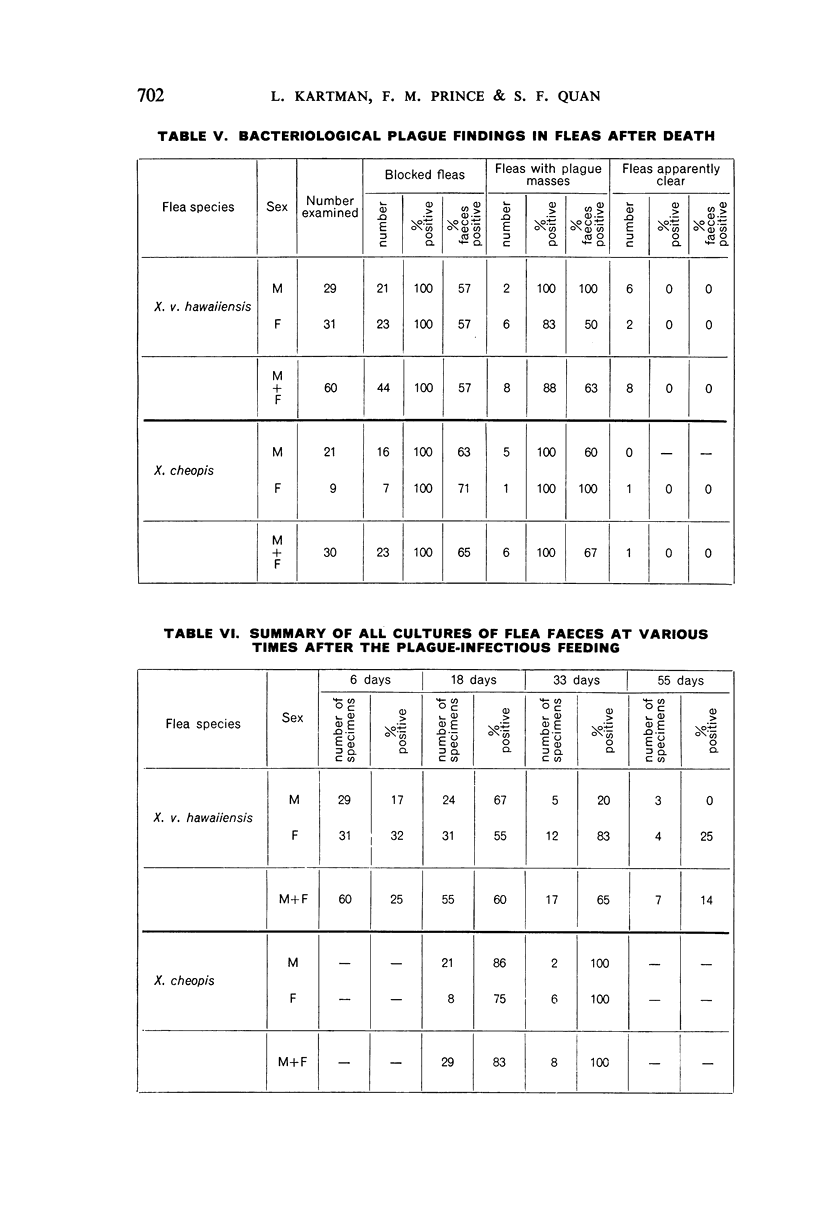

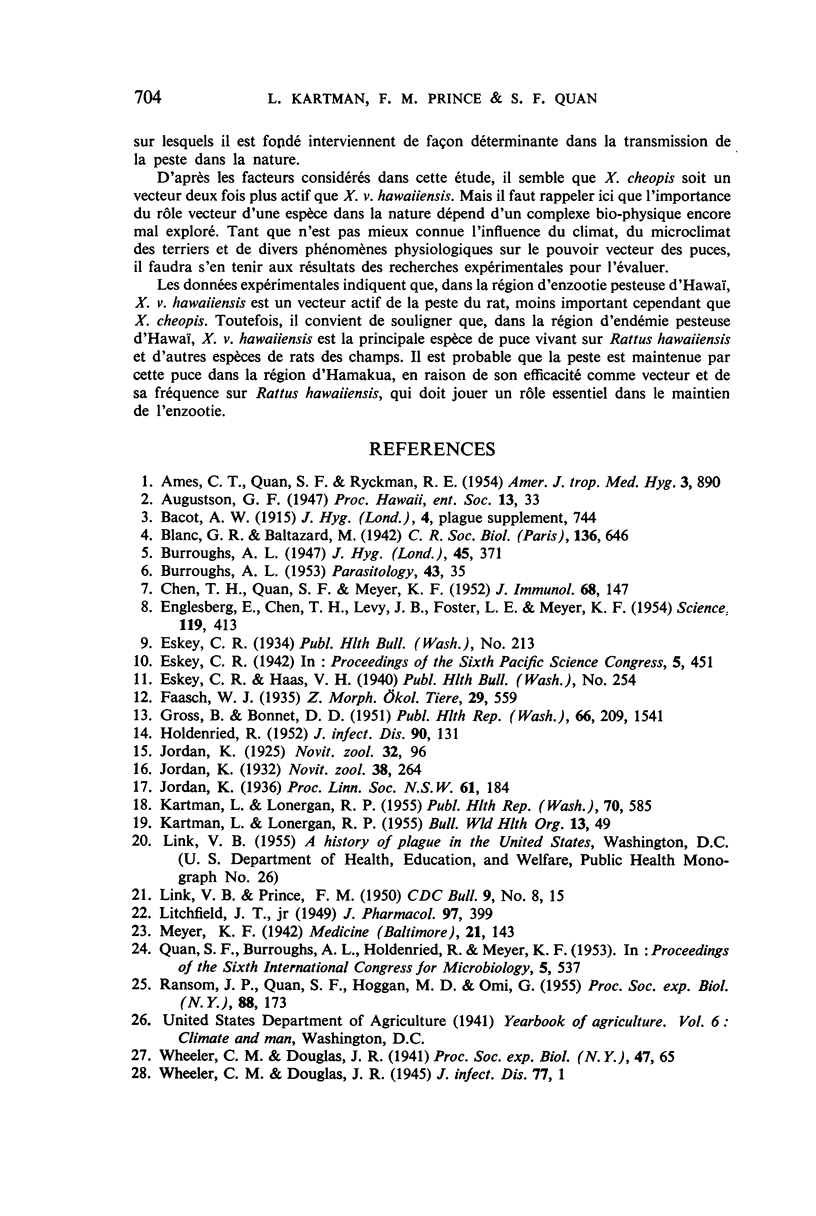
Images in this article
Selected References
These references are in PubMed. This may not be the complete list of references from this article.
- AMES C. T., QUAN S. F., RYCKMAN R. E. Triatominae in experimental transmission of plague. Am J Trop Med Hyg. 1954 Sep;3(5):890–896. doi: 10.4269/ajtmh.1954.3.890. [DOI] [PubMed] [Google Scholar]
- BURROUGHS A. L. Sylvatic plague studies. X. Survival of rodent fleas in the laboratory. Parasitology. 1953 May;43(1-2):35–48. doi: 10.1017/s0031182000018321. [DOI] [PubMed] [Google Scholar]
- CHEN T. H., QUAN S. F., MEYER K. F. Studies on immunization against plague. II. The complement-fixation test. J Immunol. 1952 Feb;68(2):147–158. [PubMed] [Google Scholar]
- ENGLESBERG E., CHEN T. H., LEVY J. B., FOSTER L. E., MEYER K. F. Virulence in Pasteurella pestis. Science. 1954 Mar 26;119(3091):413–414. doi: 10.1126/science.119.3091.413. [DOI] [PubMed] [Google Scholar]
- GROSS B., BONNET D. D. Plague in the territory of Hawaii. II. Plague surveillance, Hamakua District, Island of Hawaii. Public Health Rep. 1951 Nov 23;66(47):1541–1549. [PubMed] [Google Scholar]
- HOLDENRIED R. Sylvatic plague studies. VII. Plague transmission potentials of the fleas Diamanus montanus and Polygenis gwyni compared with Xenopsylla cheopis. J Infect Dis. 1952 Mar-Apr;90(2):131–140. doi: 10.1093/infdis/90.2.131. [DOI] [PubMed] [Google Scholar]
- KARTMAN L., LONERGAN R. P. Wild-rodent-flea control in rural areas of an enzootic plague region in Hawaii; a preliminary investigation of methods. Bull World Health Organ. 1955;13(1):49–69. [PMC free article] [PubMed] [Google Scholar]
- LITCHFIELD J. T., Jr A method for rapid graphic solution of time-per cent effect curves. J Pharmacol Exp Ther. 1949 Dec;97(4):399-408, 3 tab. [PubMed] [Google Scholar]
- RANSOM J. P., QUAN S. F., HOGGAN M. D., OMI G. Antigenic comparisons of strains of Pasteurella pestis. Proc Soc Exp Biol Med. 1955 Feb;88(2):173–176. doi: 10.3181/00379727-88-21527. [DOI] [PubMed] [Google Scholar]



